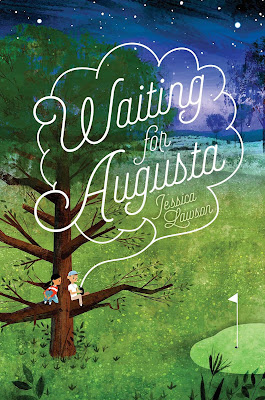Many
artists reach a plateau and stay there, revisiting the same themes or visions,
never expanding, never stretching, never evolving with their work. And then there are those lucky few artists –
which includes writers, graphic artists, musicians and performers – who
continually grow, develop and stretch their capabilities.
Into
that happy few we must count author, illustrator, animator William Joyce (born 1957).
After creating some of the most beautiful picture books of the 1990s,
Joyce then branched off into his other love, filmmaking, and helped design a
number of memorable films (including Toy
Story), before branching out into production himself. He also started the company Moonbot to make apps, games, animated
shorts – anything, in fact, to which he could harness his storytelling genius. Located in Louisiana, Moonbot is a
human-scale Disney, where talented artists, writers and filmmakers create the
next generation of children’s classics.
His
first love, though, remains books. He
started a series of picture books and prose novels that detailed the origins of
such childhood myths as Santa Claus
and the Easter Bunny called The Guardians of Childhood, and he has
now served up a new original novel with illustrations, Ollie’s Odyssey. It is his
most daring and interesting prose novel to date, and a significant
demonstration of his ever-increasing capabilities.
Ollie’s
Odyssey is all about a kid named Billy and his special relationship with his
toy, a ragdoll his mother made named Ollie.
During a wedding party, Ollie is kidnapped by the minions of an evil
toy, the demented clown Zozo. Billy must
sneak out of his home at night and trace his lost friend, a journey that leads
him to a deserted underground carnival, to a confrontation with a horde of
menacing reconfigured toys, and to a final battle
royale led by Ollie and some odds and ends who form a junk army.
In
outline, it would seem as if Ollie’s Odyssey would be just another kid’s
adventure story. But Joyce uses this
framework to write a deeply moving tale about growing up, the inevitability of change,
loss and, perhaps most important, the power of memory. Rather than a stock villain, Zozo has become
twisted through the loss of his beloved ballet dancer-doll. He is a tragic-villain, fully formed and
compelling enough for the most adult fiction.
Similarly, Billy and Ollie fear changes to their friendship as Billy
ages, and Ollie wonders what becomes of toys that are no longer loved. The coming end for their partnership does not
mitigate in any way the love they have for one another, but it does add a
tragic dimension unusual for kiddie fare.
Joyce also talks about resurrection and rebirth during the junkyard
sequence, where now useless bric-a-brac takes on new life and new identity to
help Ollie and save Billy. It is a
stunning juggling act: Joyce has written a profoundly moving and emotionally
resonant novel in the guise of a children’s book.
Just as
Joyce has previously illustrated his picture books with dazzling watercolor
work, and then branched out into both line drawings and computer illustration,
Ollie’s Odyssey tests his versatility with a series of charcoal drawings – a medium
he has not used in his published work before.
The illustrations of Ollie’s Odyssey are unlike those of any of Joyce’s
previous work, and fit the overall emotional tenor of the story
beautifully. Charcoal brings a gritty,
tactile sense to this tale of fuzzy friends and frayed castoffs that would be
missing from glossier modes of illustration.
He also used the paper upon which he drew to great effect, allowing what
would normally be the white ‘tooth’ of the paper to soak up computer-added
color. The book is also beautifully designed
by Joyce with chapter heads in bold red crayon, and different colored papers
representative of different characters and scenes.

As with
much of Joyce’s oeuvre, his latest book can be savored by adults as well as
children. A man who loves popular art immoderately (and wears that love on his
sleeve), Joyce peppers Ollie’s Odyssey with echoes of titans and works that
come before. Attuned readers will catch bits of filmmakers Todd Browning and Lon Chaney, hints of the classic Universal Monsters with a touch of The Island of Lost Souls, a healthy smattering of Ray Bradbury, and shout-outs to
everything from the original King Kong
to Batman Returns to The Magnificent Seven. Indeed, the final image of the book is a
direct rift on John Ford’s mighty
ending for The Searchers … and one
wonders if Joyce is writing for adults who have kept their inner child alive
and well, or if he writes for children who will one day make more adult
connections.
Ollie’s
Odyssey is a bigger, grander, more ambitious book than anything that Joyce has attempted
before, and he rises to the occasion splendidly. It is certainly the finest of his prose
novels, and one cannot but wonder what this protean talent has in store for us
in future years.
While we
are delighted that Joyce has spread his abilities into so many different areas,
it is perhaps in books that devotees get the fullest distillation of his
talents. His written and illustrated
works are the least collaborative of his output, and capture his philosophy
best. That view of life has been
changing and evolving over time – that William Joyce names his protagonist
Billy is surely no accident – and if the man himself can emerge from the
crucible of experience with his sense of wonder intact, what is he not capable
of? And what, he asks, are any of us not
capable of? It’s that sense of possibility,
that childlike sense of limitless adventure, that the world is filled with
things to delight each and every one of us, that is the essence of Bill Joyce.
Ollie’s Odyssey
is highly recommended to kids, old people, and everyone in between.








